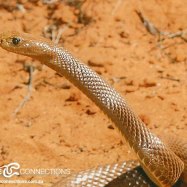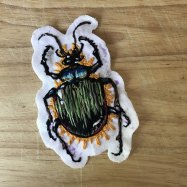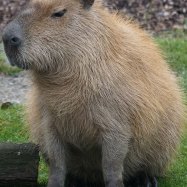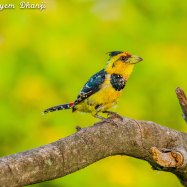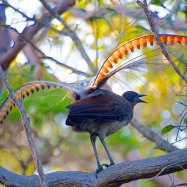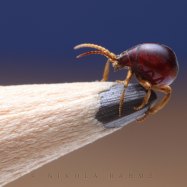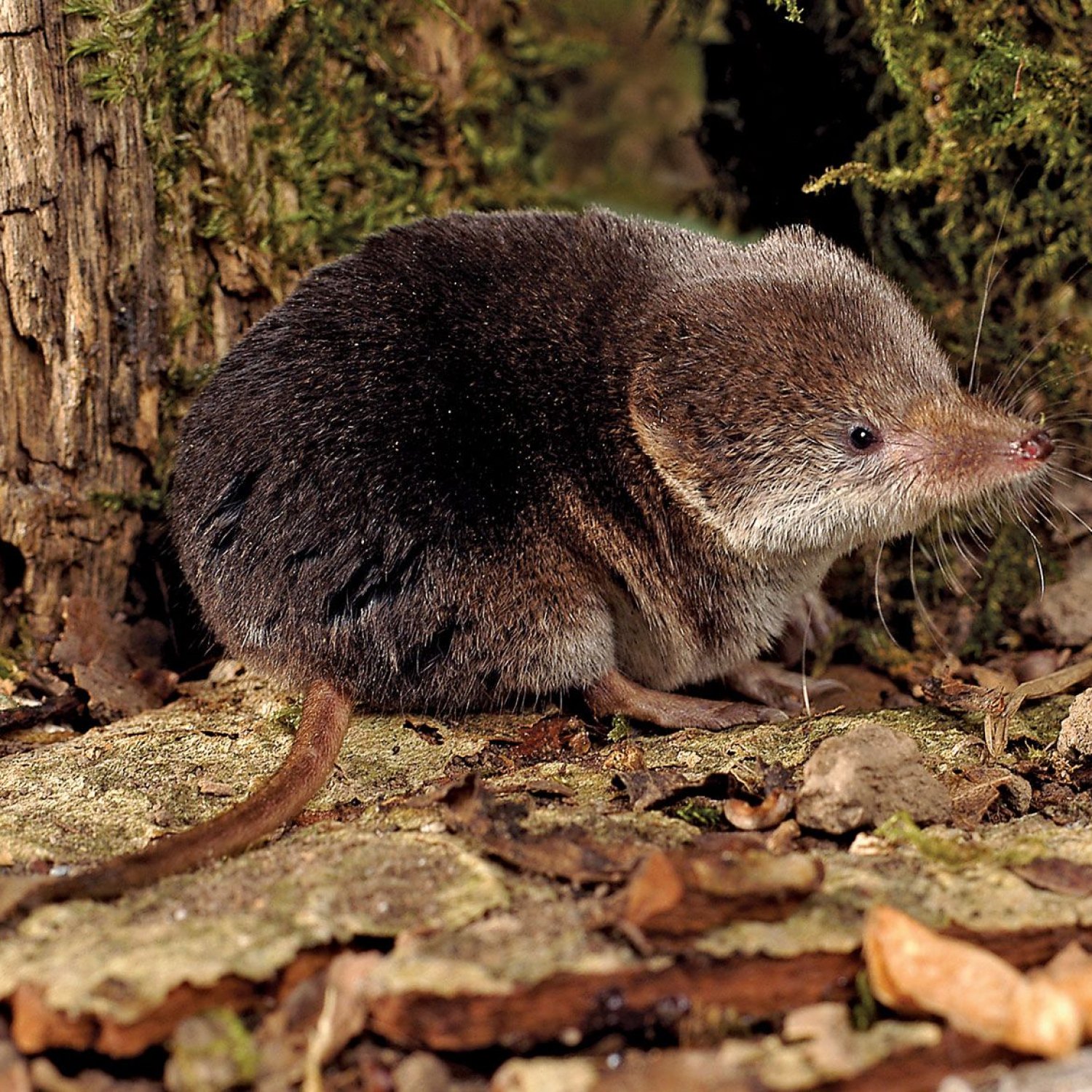
Shrew
Varies depending on the species, but usually between 3 to 5 inches (7.6 to 12.7 cm)
Meet the shrew, a small but fierce animal found in various locations around the world. With a body shape that is small and elongated, and a pointed snout, this creature may resemble a mouse, but don't be fooled. Shrews are not rodents, but belong to the family Soricidae. They come in different sizes but are typically between 3 to 5 inches long. These little animals may be small, but they are known for their strong and sharp teeth, making them skilled hunters of insects and small animals. Next time you spot a shrew, remember to admire their ferocity and adaptability in the animal kingdom.
Animal Details Summary:
Common Name: Shrew
Kingdom: Animalia
Habitat: Varies depending on the species, but commonly found in forests, grasslands, wetlands, and even urban areas
The Mighty Yet Tiny Shrew: An Animal You've Probably Never Heard Of
When you think about the animal kingdom, what are some of the first animals that come to mind? Maybe lions, elephants, or giraffes? These large and iconic creatures are often the first to capture our attention, but there are countless other species that deserve just as much recognition. One such animal is the shrew, a little-known but fascinating mammal that resides in various locations around the world.With its scientific name Soricidae, the shrew belongs to the class Mammalia and order Eulipotyphla, which includes other small mammals such as moles, hedgehogs, and solenodons. Its common name, shrew, derives from the Old English word "screawa," meaning "shrewmouse" or "field mouse Shrew." However, unlike a typical mouse, the shrew is in a league of its own.
A Look at the Kingdom and Phylum of Shrews
According to the Linnean classification system, the shrew belongs to the animal kingdom, making them multicellular, eukaryotic organisms. This kingdom encompasses a vast array of species, from insects to mammals, and shrews are no exception. They share many characteristics with other animals in this kingdom, such as having a complex nervous system, the ability to move, and the need to consume food for energy.Moreover, shrews are part of the phylum Chordata, which means that they have a spinal cord, notochord, and a dorsal tubular nerve cord at some point during their development. Again, this places them in the same group as other mammals, birds, reptiles, amphibians, and fish.
The Family of Soricidae: The Shrews' Clan
Within the order Eulipotyphla, the shrew family, called Soricidae, is a diverse and large group of small mammals. Currently, there are over 385 species of shrews classified, making them one of the most abundant mammal families. These animals can be found in Europe, Asia, Africa, and North America, with their geographical distribution varying depending on the species Sedge Warbler.The Shrew's Habitat: Versatility at Its Finest
One of the most remarkable traits of shrews is their ability to adapt to different environments. These tiny mammals can be found in a wide range of habitats, including forests, grasslands, wetlands, and even urban areas. Some species live primarily on land, while others are semi-aquatic, dwelling in or near water bodies.The Carnivorous Appetite of Shrews
Shrews are exclusively carnivorous, feeding on insects, worms, slugs, snails, small rodents, and even other shrews. These animals have one of the highest metabolic rates among mammals, meaning they need a constant supply of food to support their energy needs. As a result, shrews are incredibly active, constantly on the move to find their next meal.The Physical Features of the Mighty Shrew
Although small, the shrew has several physical features that make it an intriguing animal. First and foremost, their body shape is unique, with a small, elongated body and a pointed snout. This shape allows them to move swiftly and efficiently, making them skilled hunters and escape artists.Their size and coloration also aid in their survival. Shrews typically range from 3 to 5 inches in length, with some species only growing up to 2 inches. Their small size makes them difficult to detect by predators, and their fur coloration varies depending on the species. In general, shrews are brown or gray, blending in well with their natural surroundings.
Shrews Around the World
As mentioned earlier, shrews have a wide geographical distribution, and depending on the species, they can be found in various countries. In Europe, for example, one can come across the common shrew, found in gardens and woods, or the rare giant house shrew, which can grow up to 8 inches in size.In North America, shrews are more abundant, with the masked shrew, short-tailed shrew, and the least shrew being just a few of the many species present. Over in Africa, the elephant shrew, a distant relative of the common shrew, stands out for its unusual resemblance to an actual elephant.
In Asia, the rare white-toothed shrew inhabits the region's mountainous areas, while the Eurasian water shrew can be found in wetlands and streams. These are just a handful of the many shrew species found around the world, each with unique characteristics and behaviors.
The Mystery of Shrews: Are They Venomous?
While exploring the world of shrews, one might come across the notion that these animals are venomous. It is a common misconception that shrews are venomous because, unlike most mammals, they have special teeth called "red teeth." These reddish-brown teeth are an adaptation that releases a toxin, but only to subdue and kill their prey.However, shrews are not venomous in the traditional sense, as their toxin is not powerful enough to pose a threat to humans. Instead, it helps them capture their prey efficiently. Moreover, shrews are not aggressive creatures and will only bite as a last resort if they feel threatened.
Why Shrews Deserve Our Attention
Despite being relatively unknown, shrews are incredibly beneficial to the ecosystem. Their diet consists mainly of insects, which can be considered pests in some cases. Therefore, shrews play a crucial role in controlling insect populations, which ultimately benefits farmers and gardeners. They also act as food sources for other animals, contributing to the delicate balance of nature.Furthermore, shrews are some of the most resilient creatures, surviving in diverse habitats and adapting to various conditions. Some species can even survive extreme temperatures or go prolonged periods without food. Their strength, agility, and resilience make them a force to be reckoned with in the animal kingdom.
In Summary: The Mighty Yet Tiny Shrew
In conclusion, the shrew may be a small and often overlooked mammal, but it is undoubtedly a remarkable one. From its versatile habitat to its carnivorous appetite and unique physical characteristics, this tiny creature has captured the interest of scientists and nature enthusiasts alike. While they may not be as famous as lions or elephants, shrews hold their own in the animal kingdom and deserve our attention and admiration. So next time you spot a mouse or a small mammal, take a closer look – it just might be a mighty shrew.

Shrew
Animal Details Shrew - Scientific Name: Soricidae
- Category: Animals S
- Scientific Name: Soricidae
- Common Name: Shrew
- Kingdom: Animalia
- Phylum: Chordata
- Class: Mammalia
- Order: Eulipotyphla
- Family: Soricidae
- Habitat: Varies depending on the species, but commonly found in forests, grasslands, wetlands, and even urban areas
- Feeding Method: Carnivorous
- Geographical Distribution: Found in Europe, Asia, Africa, and North America
- Country of Origin: Depends on the species
- Location: Various locations around the world
- Animal Coloration: Varies depending on the species, but commonly brown or gray
- Body Shape: Small and elongated body with a pointed snout
- Length: Varies depending on the species, but usually between 3 to 5 inches (7.6 to 12.7 cm)
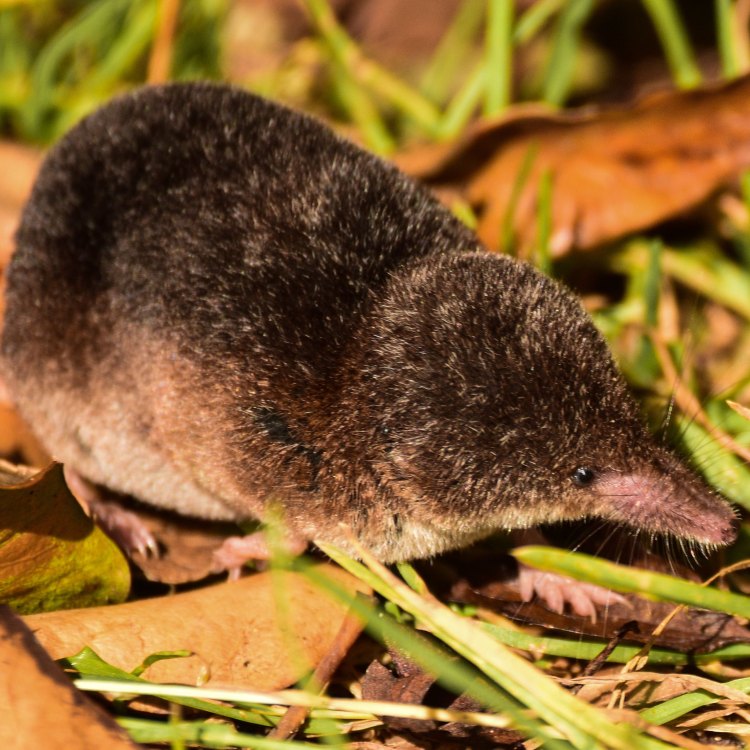
Shrew
- Adult Size: Varies depending on the species, but usually between 3 to 5 inches (7.6 to 12.7 cm)
- Average Lifespan: Varies depending on the species, but usually 1 to 2 years
- Reproduction: Sexual
- Reproductive Behavior: Varies depending on the species, but commonly involves courtship rituals
- Sound or Call: Varies depending on the species, but commonly produces high-pitched vocalizations
- Migration Pattern: Non-migratory
- Social Groups: Solitary
- Behavior: Active throughout the day and night, excellent climbers, have a strong sense of smell
- Threats: Habitat loss, predation, climate change
- Conservation Status: Varies depending on the species, but some are considered threatened or endangered
- Impact on Ecosystem: Shrews play an important role in controlling insect populations
- Human Use: Some species are used in scientific research
- Distinctive Features: Small size, pointed snout, short tails
- Interesting Facts: Shrews have a high metabolic rate and need to eat every few hours to survive
- Predator: Owls, snakes, foxes, and other small carnivores
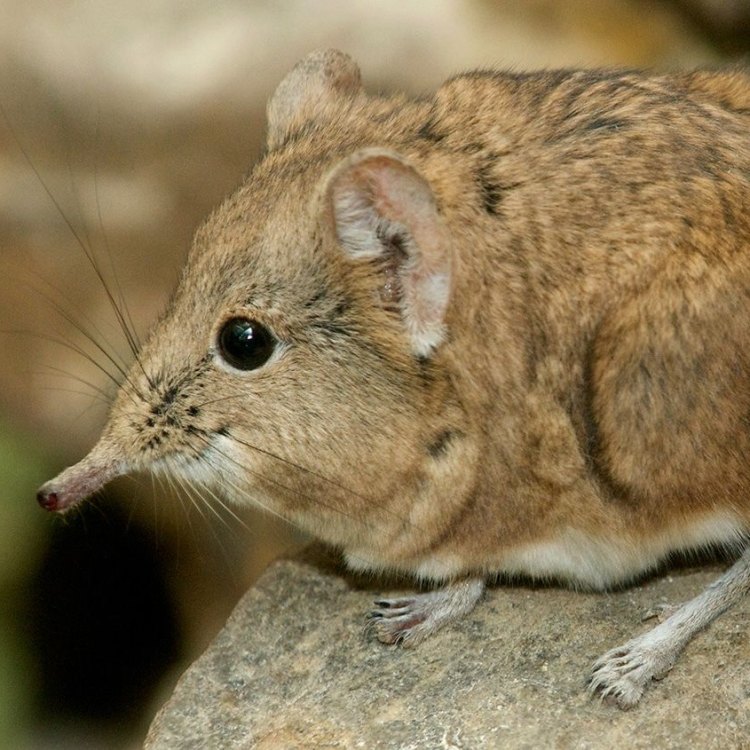
Soricidae
The Fascinating World of Shrews: The Incredible Small Creatures with a Big Impact
In the vast and diverse animal kingdom, there are a multitude of unique and fascinating creatures. From the majestic lions of the African savannah to the intelligent dolphins of the ocean, each species has its own remarkable characteristics. Among these amazing animals is the shrew, a small, unassuming mammal known for its incredible abilities and important role in the ecosystem.Shrews belong to the family Soricidae, and there are over 400 different species found across the globe PeaceOfAnimals.Com. These tiny mammals can be found in a wide range of habitats, from forests to grasslands to deserts. They are most commonly found in North America, Asia, and Europe. Although they may look similar to rodents, shrews are actually insectivores, meaning they primarily feed on small insects.
So, what makes shrews so unique and interesting? Let's dive into the world of these incredible small creatures and discover their distinctive features, behavior, and impact on the ecosystem.
The Small but Mighty Shrew
The size of shrews may vary depending on the species, but on average, they are only 3 to 5 inches in length, with a weight ranging from 2 to 14 grams. This makes them one of the smallest mammals in the world. Despite their tiny size, shrews have a very high metabolic rate and need to eat every few hours to survive. In fact, they need to consume more than their body weight in food every day, making them the most voracious eaters of the mammal world.Their small size and high metabolism also mean that shrews have a relatively short lifespan Sparrowhawk. On average, they live for 1 to 2 years, but some species can live for up to 4 years in captivity.
A Day in the Life of a Shrew
Shrews are active little creatures, and unlike many other mammals, they are not nocturnal. They are active both day and night, constantly on the move in search of food. This is due to their high metabolic rate and fast-paced lifestyle. They are also excellent climbers, using their sharp claws and agility to scurry up trees and shrubs in search of insects.One of the most distinctive features of shrews is their pointed snout, which they use to sniff out their prey. They have a strong sense of smell, which helps them navigate and locate their food in dark or dense environments.
Courtship Rituals and Vocalizations
Despite their small size, shrews are not shy when it comes to courtship. Their reproductive behavior varies depending on the species, but many involve elaborate courtship rituals and vocalizations to attract a mate. This can include the male chasing the female and engaging in high-pitched vocalizations or even fighting to gain the female's attention.Some shrew species are monogamous, while others have multiple partners. Once the mating is complete, the female becomes pregnant and gives birth to a litter of 2 to 10 young, depending on the species.
A Solitary Lifestyle
Unlike many other animals, shrews are generally solitary creatures and do not form social groups. They are territorial and will fiercely defend their home range from other shrews. Some species, however, have been known to share common burrows during the winter months to conserve heat.The Shrew's Song: High-Pitched Vocalizations
Shrews may be small, but they are not silent. These tiny creatures produce high-pitched vocalizations, sometimes referred to as a "shrew's song," to communicate with each other. These vocalizations can vary depending on the species and are used for various reasons such as asserting dominance, warning of danger, or attracting a mate.Non-Migratory Creatures
Shrews are non-migratory animals, meaning they do not travel long distances like many other animals do. They establish a home range and spend their entire lives within it, foraging for food and mating within their familiar territory. Despite their small size, shrews are resilient and can survive in a variety of habitats, from forests to grasslands to urban areas.The Dangers Facing Shrews
As with many other species, shrews face several threats in their natural habitats. The primary threat to shrews is habitat loss due to deforestation and urbanization. As their habitats shrink, shrew populations decline, making them more vulnerable to other dangers, such as predation and climate change.Due to their small size and high metabolic rate, shrews need to eat constantly to survive, making them easy targets for predators. Owls, snakes, foxes, and other small carnivores are some common predators of shrews.
Climate change also poses a threat to shrews. As temperatures and weather patterns change, the availability of insects, their main food source, can be affected, leading to food shortages for shrews.
The Importance of Shrews in the Ecosystem
Although often overlooked, shrews play a crucial role in the ecosystem. As insectivores, they help to control the population of insects, such as flies, beetles, and grasshoppers. This is vital in maintaining a healthy balance in the ecosystem and preventing the overpopulation of insects, which can have harmful effects on plants and other animals.Shrews are also considered a crucial food source for many predators, both large and small, making them an important part of the food chain. Their constant foraging and digging activities also help to aerate the soil and distribute seeds, contributing to the growth of plants and vegetation.
Overall, the presence of shrews in an ecosystem is necessary for its health and balance, and their decline or extinction could have far-reaching consequences.
Shrews and Human Use
While shrews may not be popular as pets, they do have some human uses. Some species, such as the short-tailed shrew, are used in scientific research. Their ability to survive in a wide range of habitats and quick reproduction make them ideal for studying various biological and ecological processes.The Distinctive Features of Shrews
Despite their small size, shrews have several distinctive physical characteristics that set them apart from other animals. Their pointed snout aids in their excellent sense of smell and is also used for digging and burrowing. They have small eyes and ears, which are not very effective, as they rely mainly on their sense of smell to navigate and find food.Shrews also have short and dense fur, usually brown or grey in color, and short tails. Interestingly, some shrew species can detach their tails when threatened, just like lizards do, as a distraction to predators, allowing them to escape.
Some Interesting Facts about Shrews
Aside from their unique characteristics and vital role in the ecosystem, shrews also have some fascinating facts that make them even more intriguing.Did you know that some species of shrews produce a venom from their saliva? This venom is used to paralyze their prey, making it easier for them to capture and consume them.
Another interesting fact about shrews is that they are not affected by many toxins that are harmful to other animals. This is because they have a higher tolerance for certain chemicals due to their high metabolic rate, making them a valuable species to study for their ability to withstand environmental toxins.
In Conclusion
Shrews may be small, but they have an incredibly big impact on the world around us. From their fast-paced lifestyle and unique characteristics to their essential role in maintaining the balance of the ecosystem, these tiny mammals are truly remarkable creatures. As we continue to learn more about shrews, it is essential to remember the importance of conserving their habitats and protecting them from the threats they face. Whether through scientific research or simply appreciating their role in the natural world, shrews deserve our admiration and respect. As the saying goes, "big things come in small packages," and shrews are a perfect example of this.
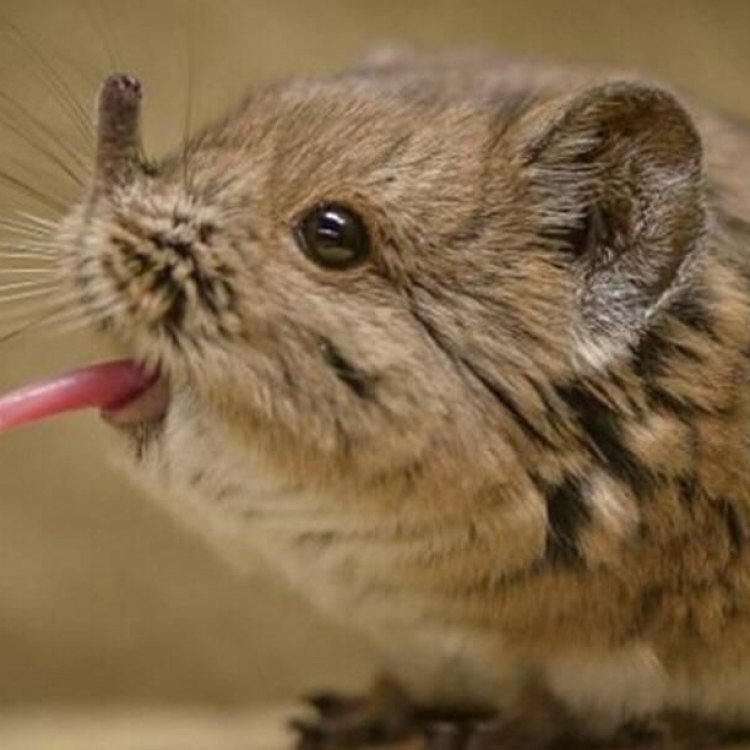
The Mighty Yet Tiny Shrew: An Animal You've Probably Never Heard Of
Disclaimer: The content provided is for informational purposes only. We cannot guarantee the accuracy of the information on this page 100%. All information provided here may change without prior notice.

